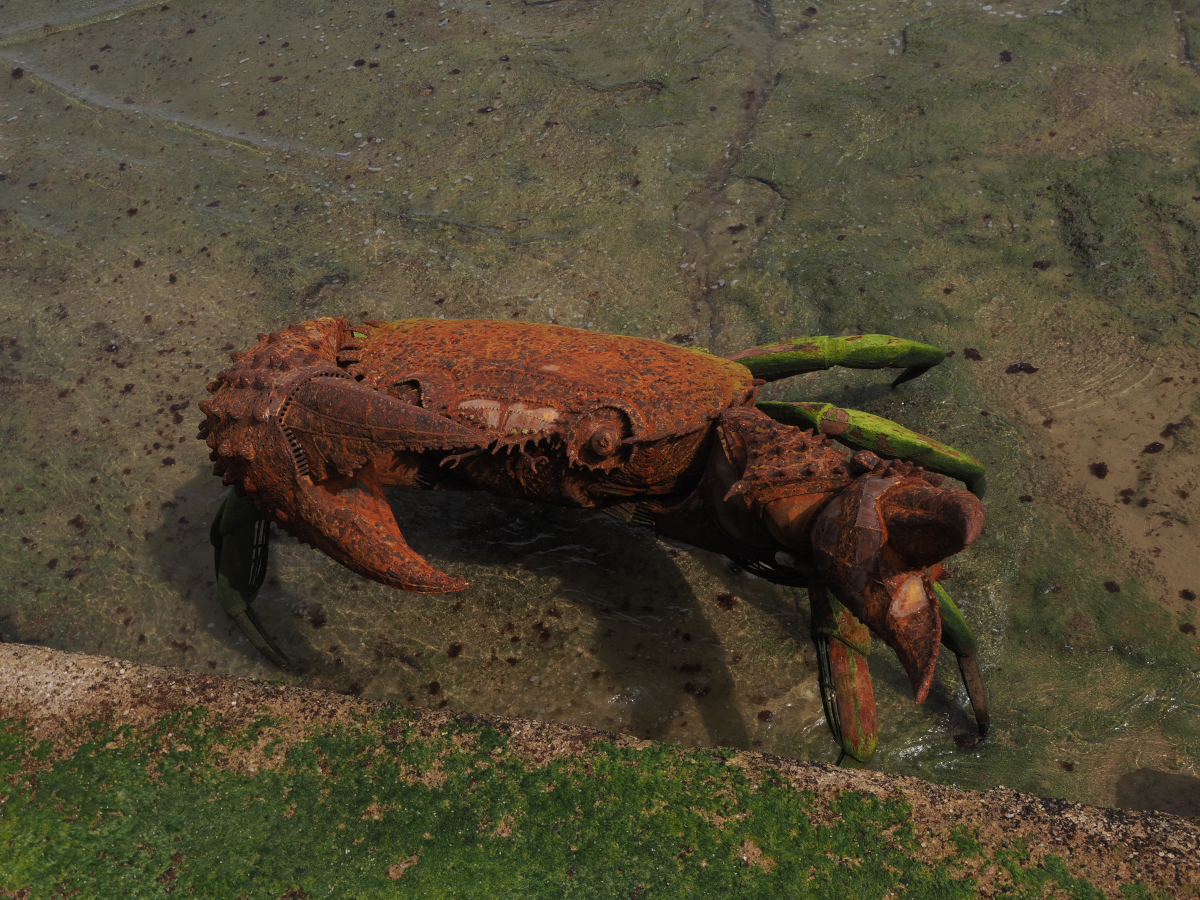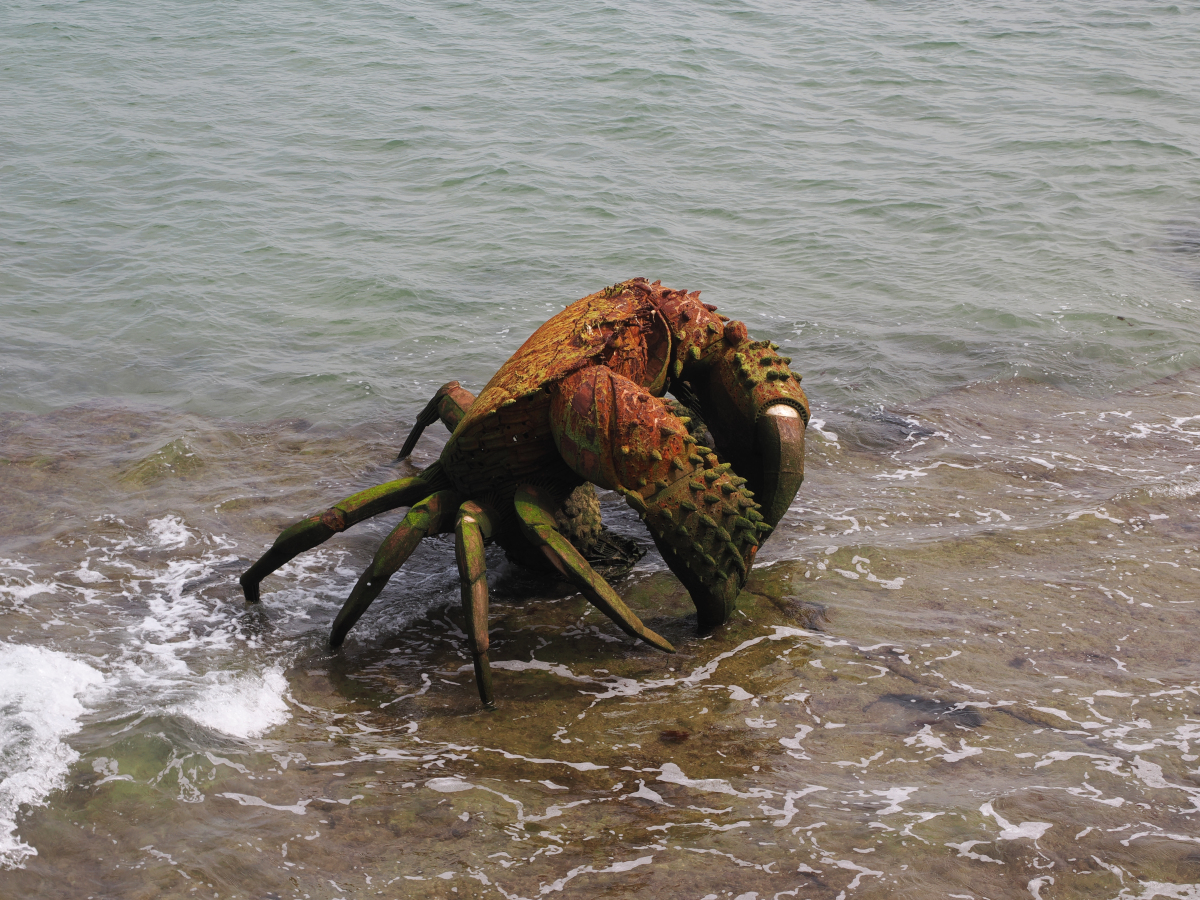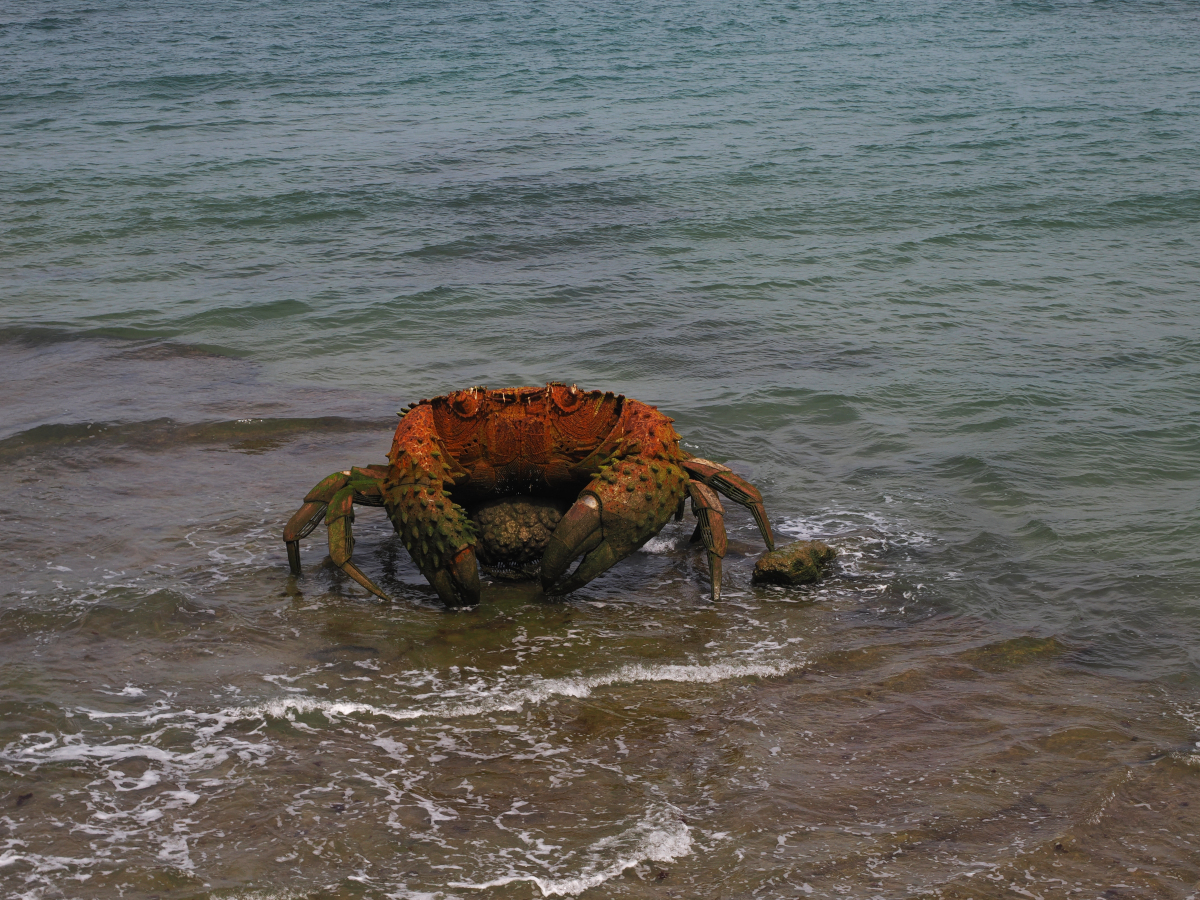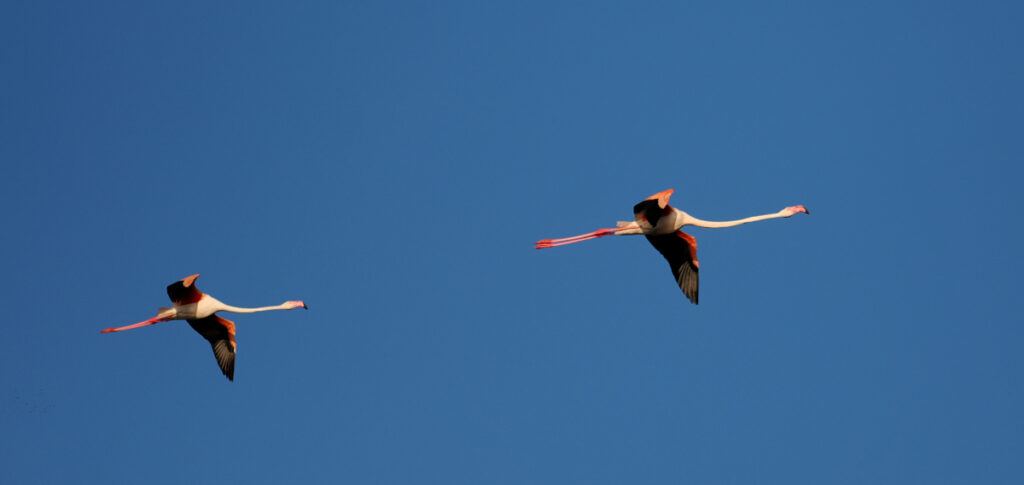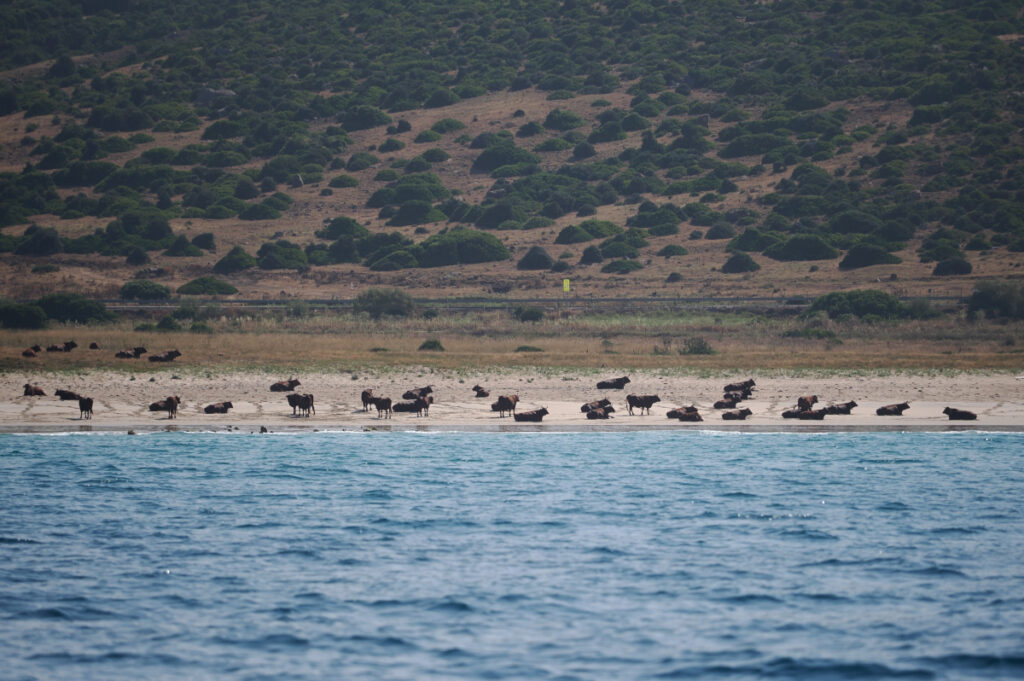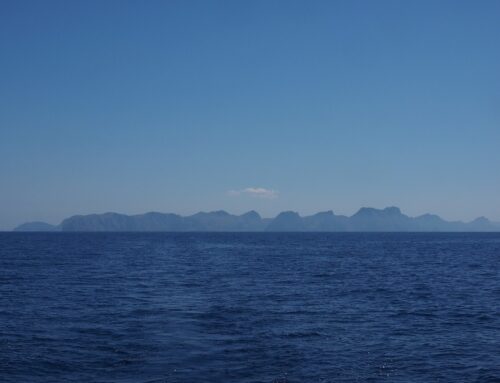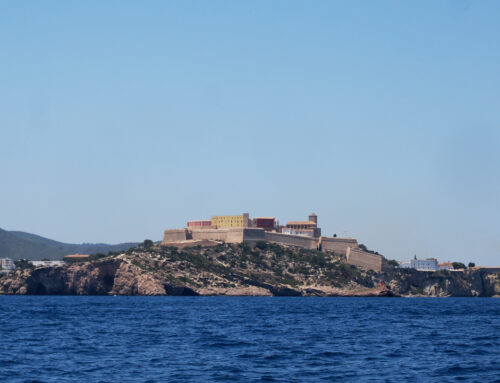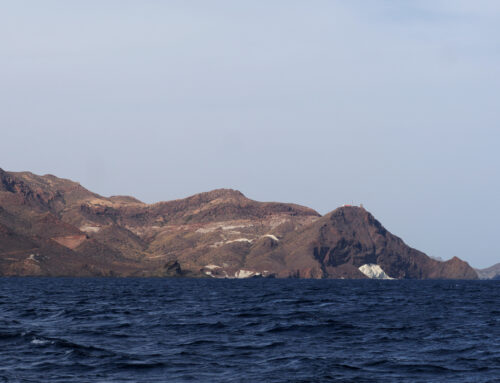The joys of discovering a small town
We had hoped to make Cádiz our next stop, but with bad weather approaching and a regatta on over the next couple of days, we were unable to secure a berth nearby. So, instead of the historical port of Cádiz, we went into Chipiona, a place we’d never heard of but which lies a little to the north of Cádiz.
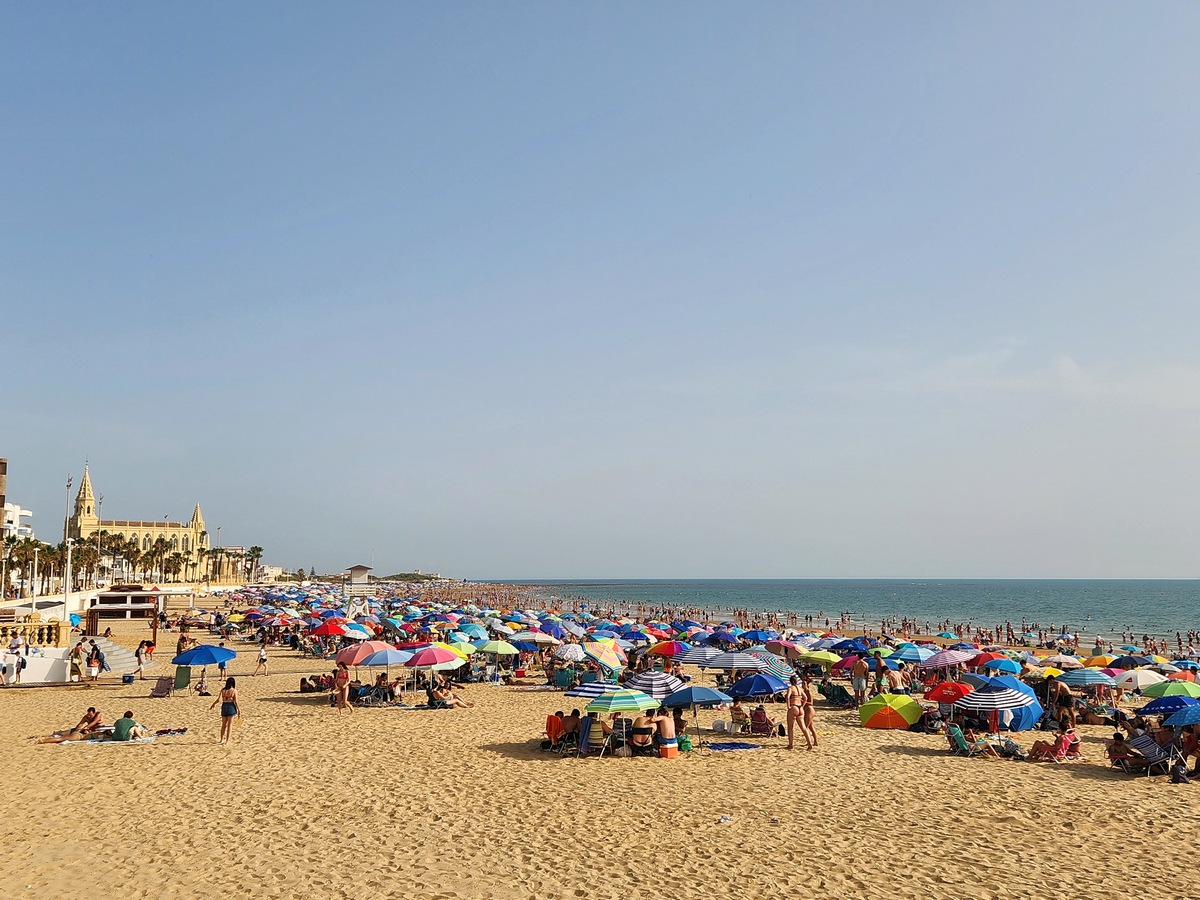
Plenty other people had obviously heard about Chipiona; the beaches were packed on the weekend.
A bit of history
Chipiona sits at the mouth of the Rio Guardalquivir, just seaward of what was once the only permitted Port of Entry to Spain for ships coming from the Americas, the customs port of Sanlúcar de Barrameda.

Faro de Chipiona, at 62m the tallest lighthouse in Spain.
Here a dangerous rocky bar often forced ships to wait before they could head in to Sanlúcar, and not infrequently they came to grief in these shallows. Eventually this danger forced the decision to switch the port of entry to Cádiz and Chipiona and Sanlúcar faded into insignificance.
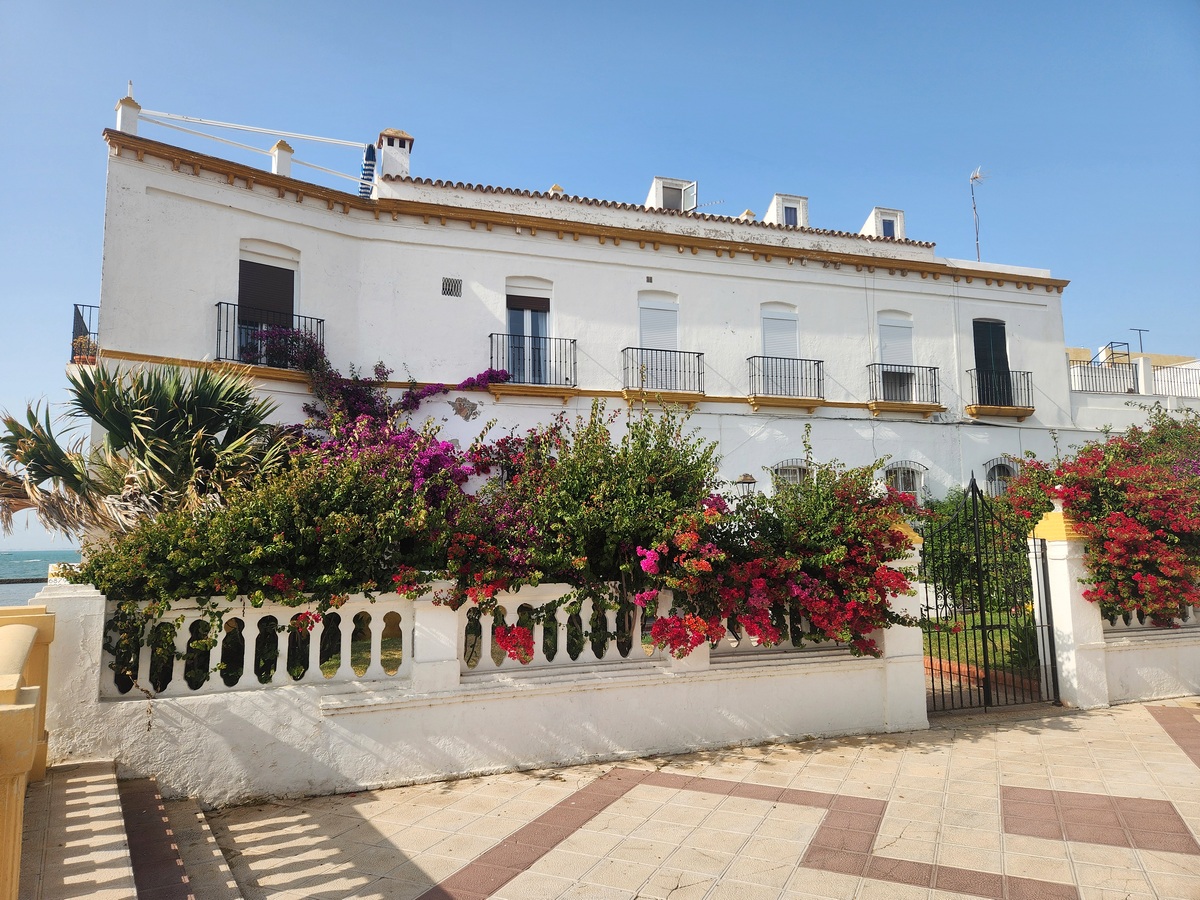
Excuberant flowering at an old seaside building.
The present day
Despite its demise some hundreds of years ago, Chipiona had lots to offer. There were a number of small but interesting museums covering its once important role in the trade with the Americas. In one of these a very friendly bloke, having ascertained our interest in birds took us to a closed-off section of the Queen’s old residence to see the only nesting site of the little swift (Apus affinus) in Europe. That alone was worth the stop off!
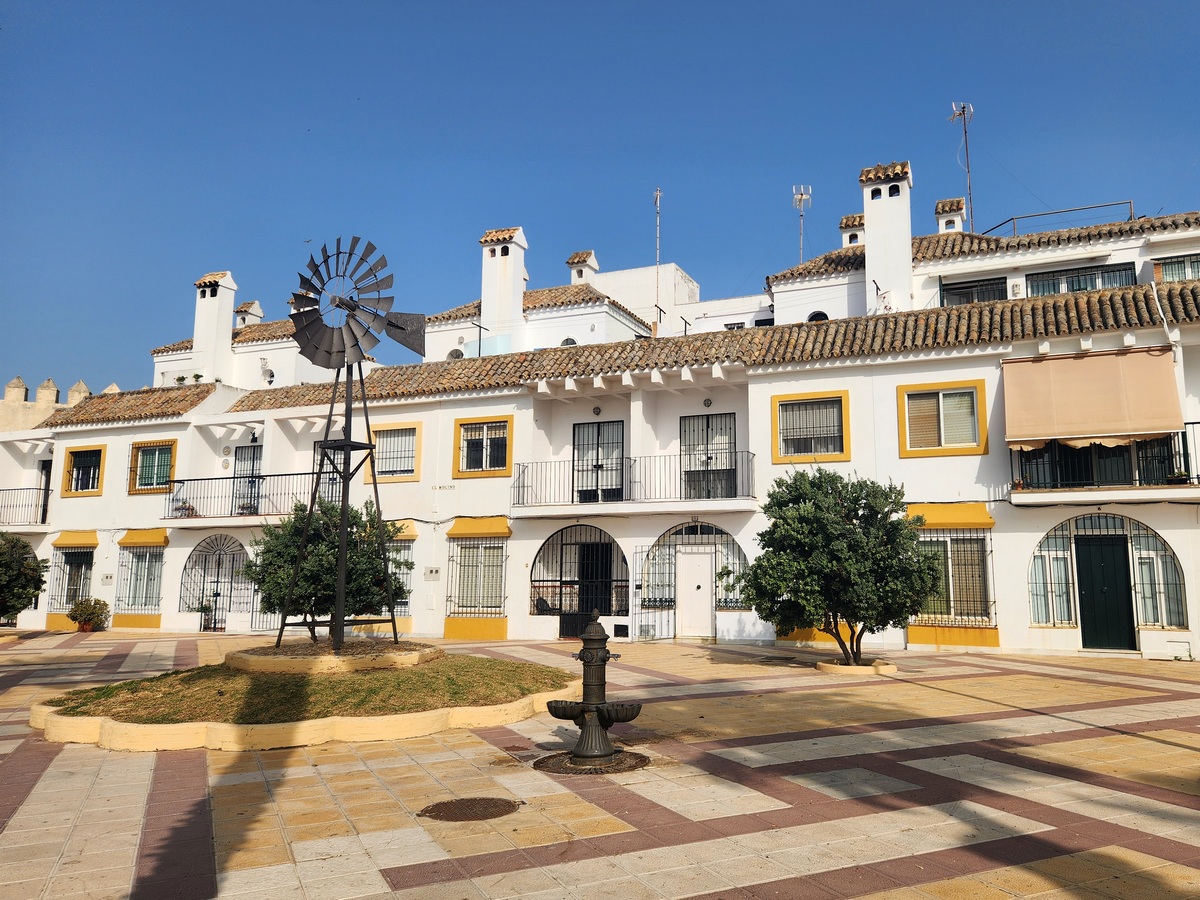
Beautiful square in the old centre of Chipiona.
These little chaps were in full nesting mode and were zipping in and out through the stone arches to and from their nests, their shrill cries ringing in the shady colonnade and out over the sea. That shrill call of swifts, is for me, the sound of European cities in the summer, a buzzing squeal almost, coming in at speed and then whipping away as they whirl on the wind over rooftops and through the streets. Love it.
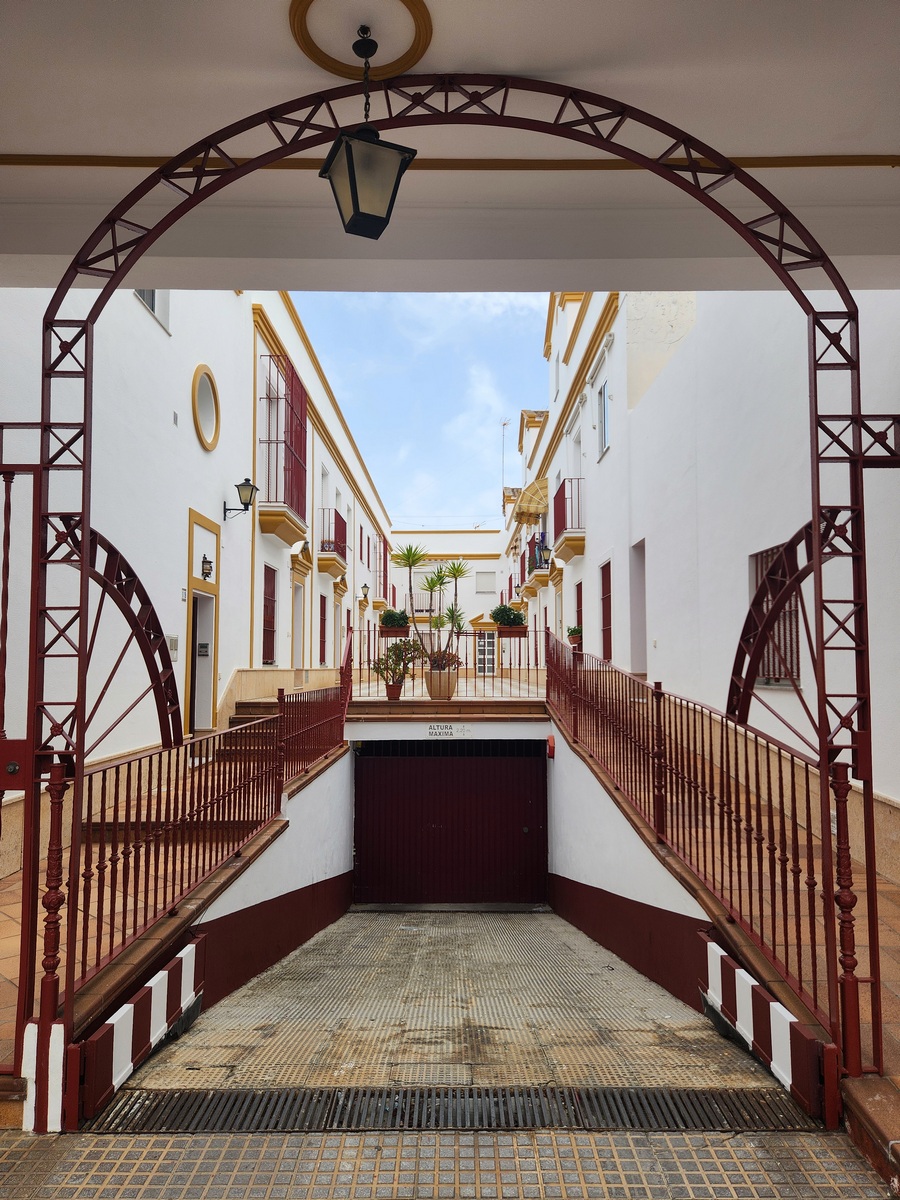
Nice symmetry (although not quite) and colours.
Los Corrales
Chipiona’s head land and beaches also boast what was for us a bit of a surprising relict of fishing past – an extensive area of rock-walled fishing traps, called Los Corrales. We are used to seeing Aboriginal fishing traps (or at least their remnants) in different spots in Australia, in the Wet Tropics, the Gulf of Carpentaria and even inland in northern NSW, and New Guinea.
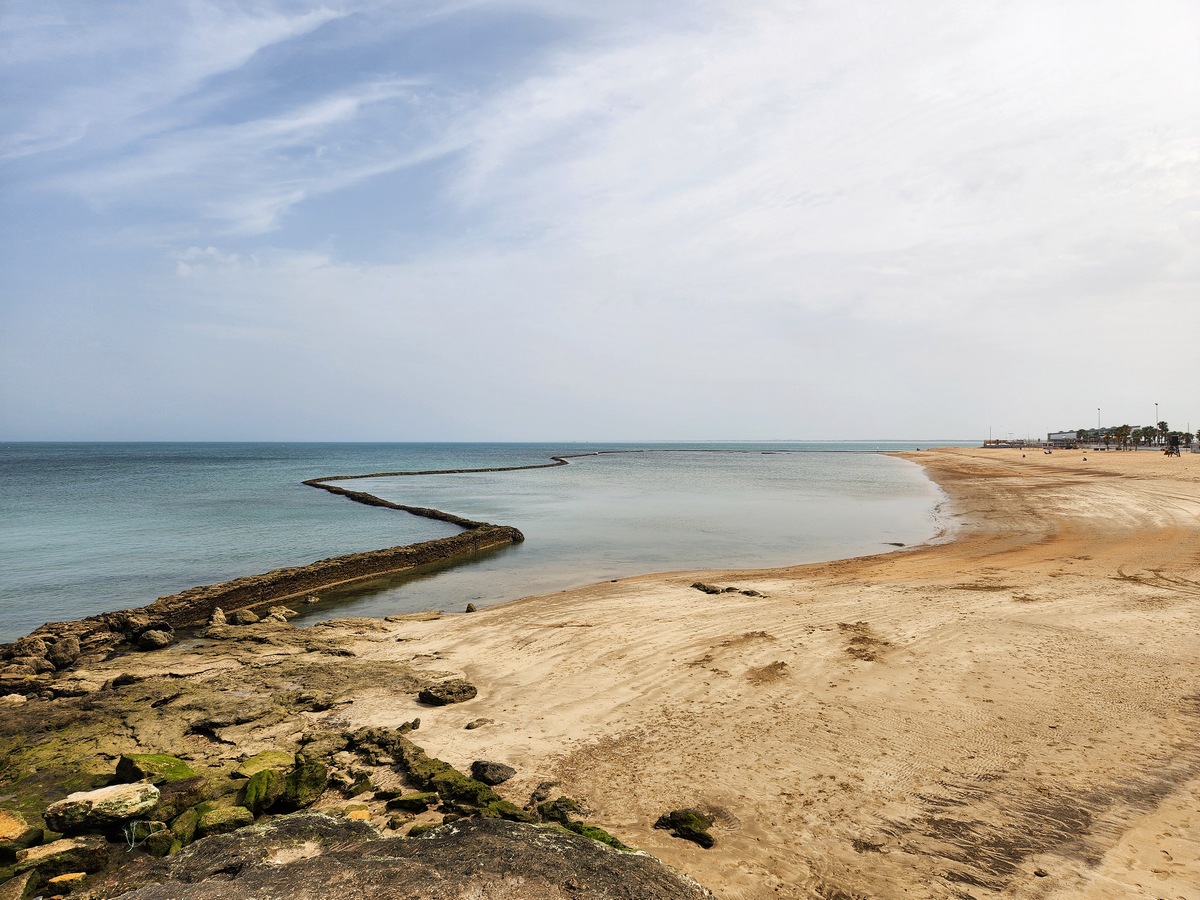
One of the fish traps, during weekdays, without anyone on the beach.
For some reason though, we had never associated this wonderfully relaxed and efficient approach to fishing with Europe. It seems that the good folk of Chipiona have been enjoying the easy harvest of their fish traps for a couple of thousand years and, are still actively maintaining and harvesting them using their traditional methods and tools.
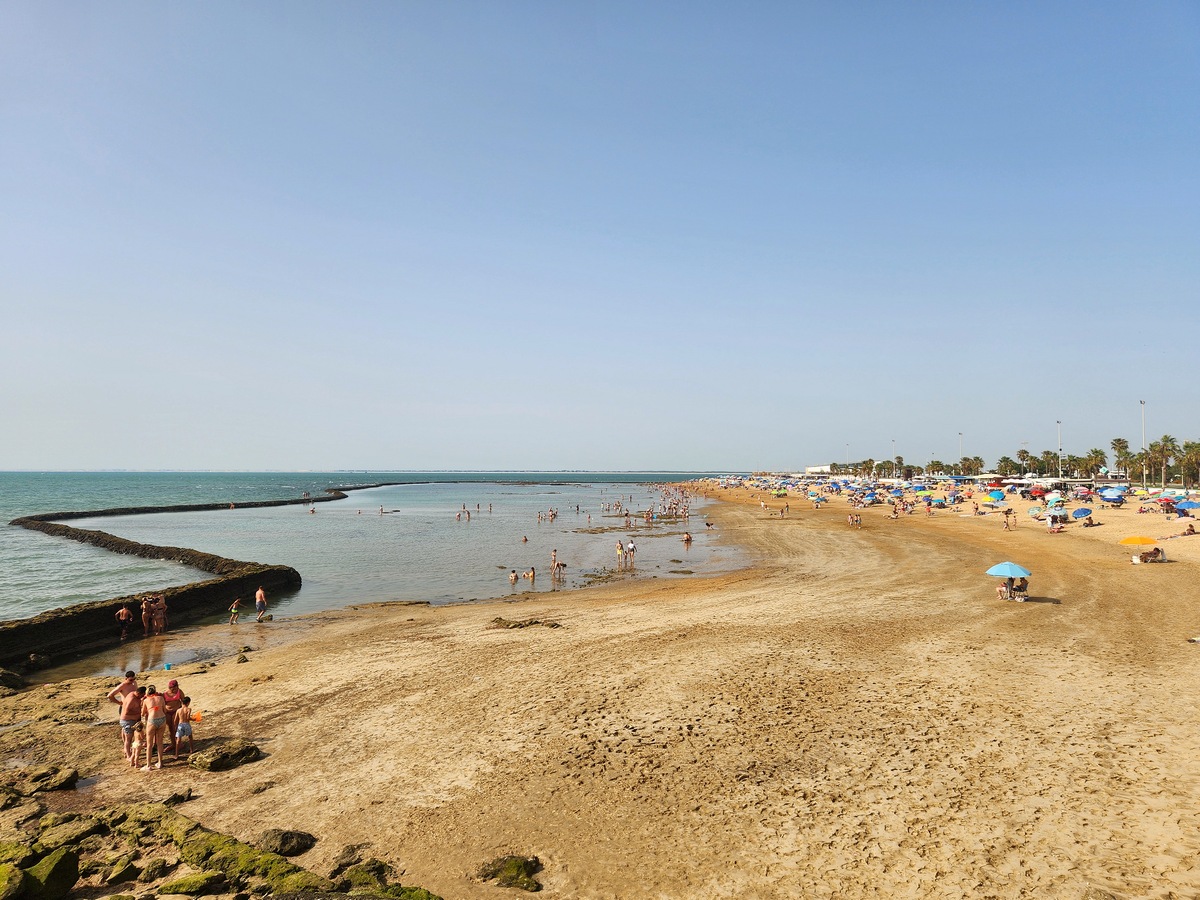
The same fish trap, during the weekend, clearly showing the huge scale of these structures.
Chameleons
Another highlight (?) was our search for chameleons in the wetlands behind Chipiona’s low, narrow dune bank. Just as one would expect in an area where developers have had free and unsupervised rein over beachfront real estate, the only beachfront areas that have escaped being covered with cheap holiday units and duplexes are those areas that are too wet for development and the actual dunes themselves.
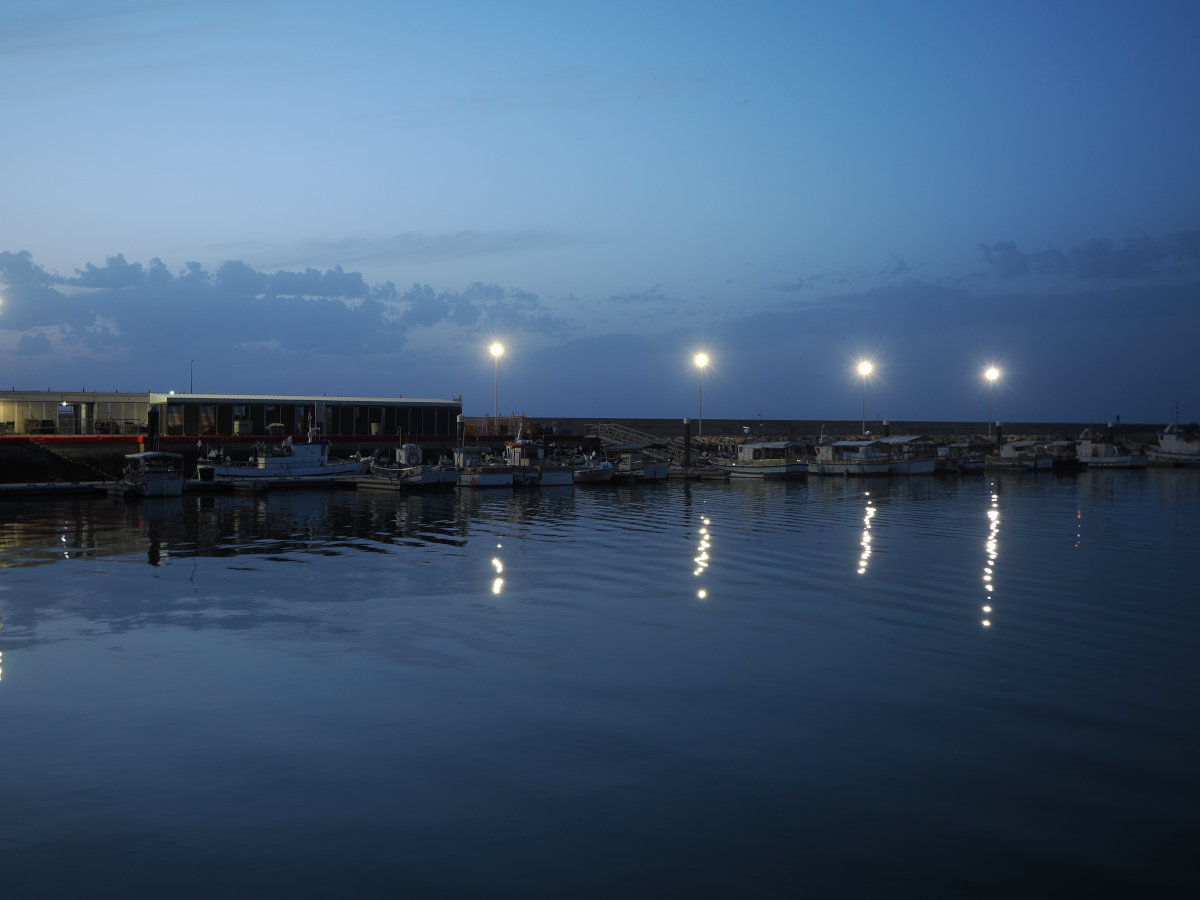
There was also a bit of modern fishing going on at Chipiona.
In a tacit admission of guilt, these areas have now been turned into nature reserves and, again, as one would expect of an area next to a holiday town are used primarily as a spot for dumping garbage and litter. Not lovely but very common around the world.
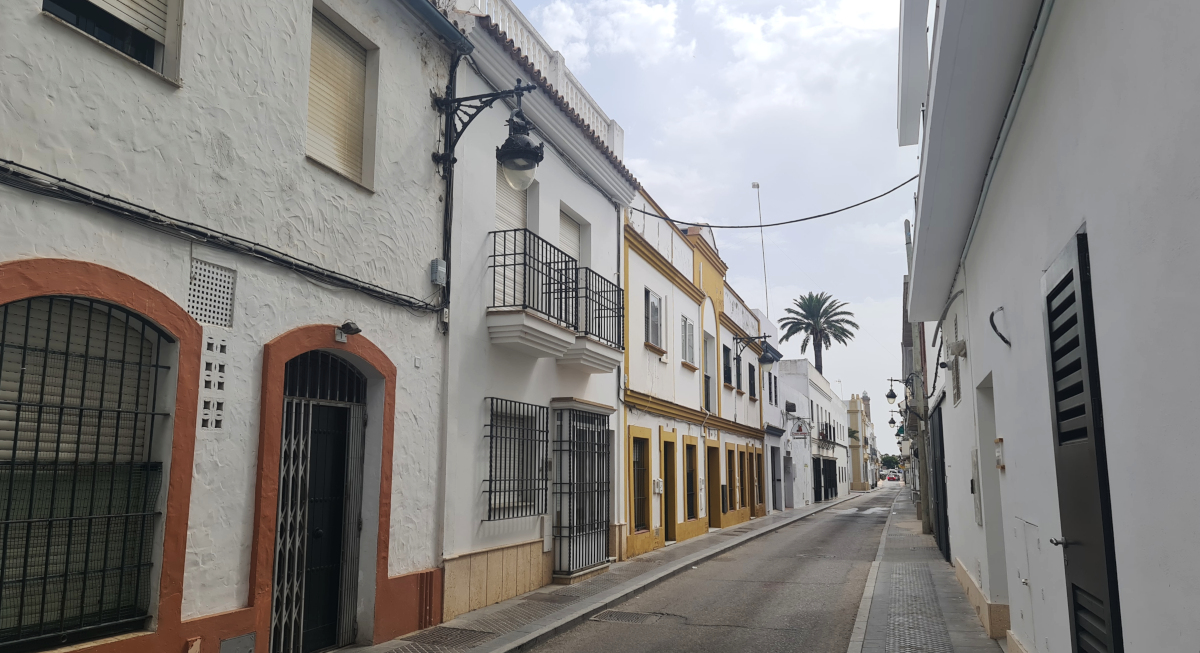
Street scene in Chipiona.
Anyway, this reserve area is also the home to common chameleons (Chamaeleo chamaeleon) a critter that neither of us have seen. So, we spent an afternoon wandering along the boardwalks and sandy trails of the reserve scanning the vegetation looking for C. chameleon.
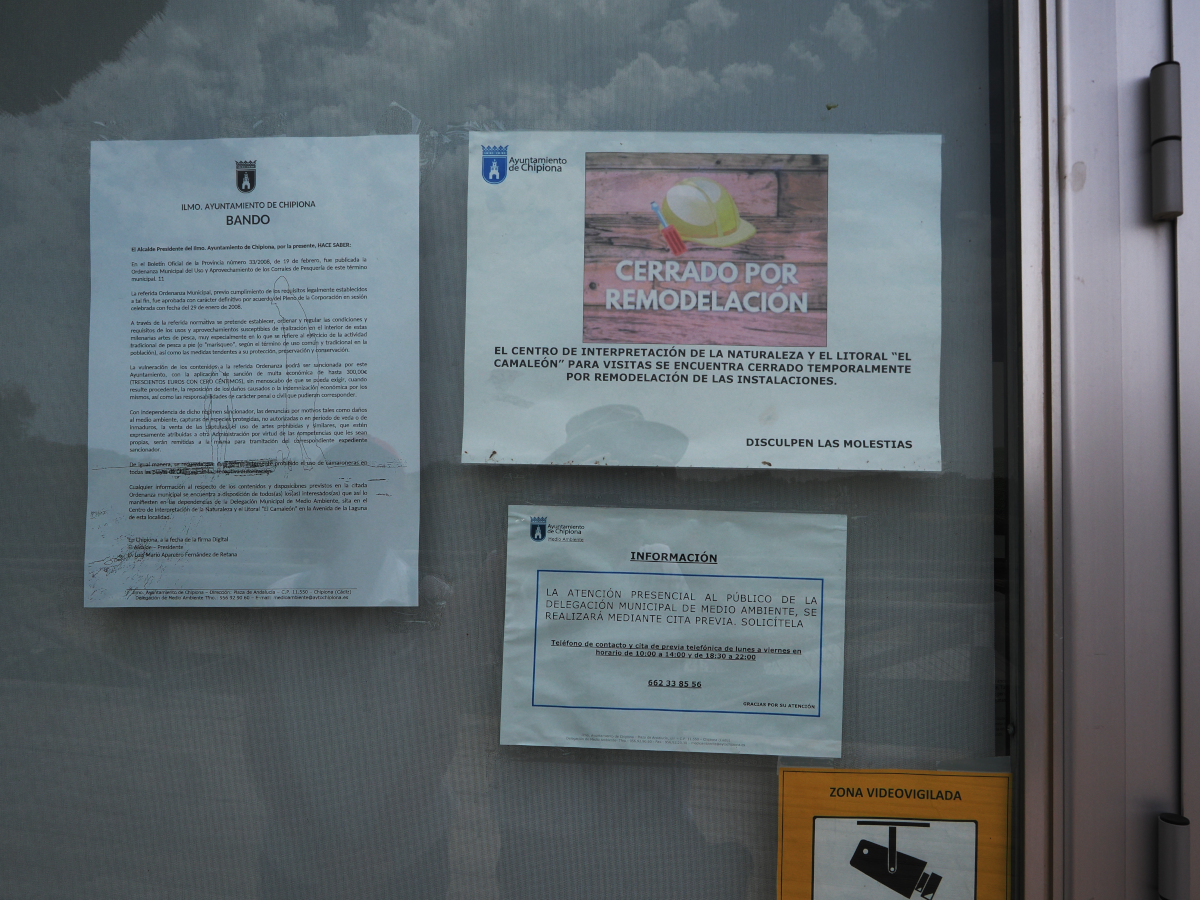
The Chameleon visitor centre was, yes, closed for renovations. So we had to try and find these champions of camouflage all by ourselves.
Well, a couple of hours later we had racked up a green wall lizard (Timon Lepidus), a Granata hare (Lepus granatensis), a couple of small brown birds that escaped identification, a gloss ibis (Plegadis falcinellus), a mob of Eurasian magpies (Pica p. melanota) and a distinct thirst. No chameleons. Sigh.
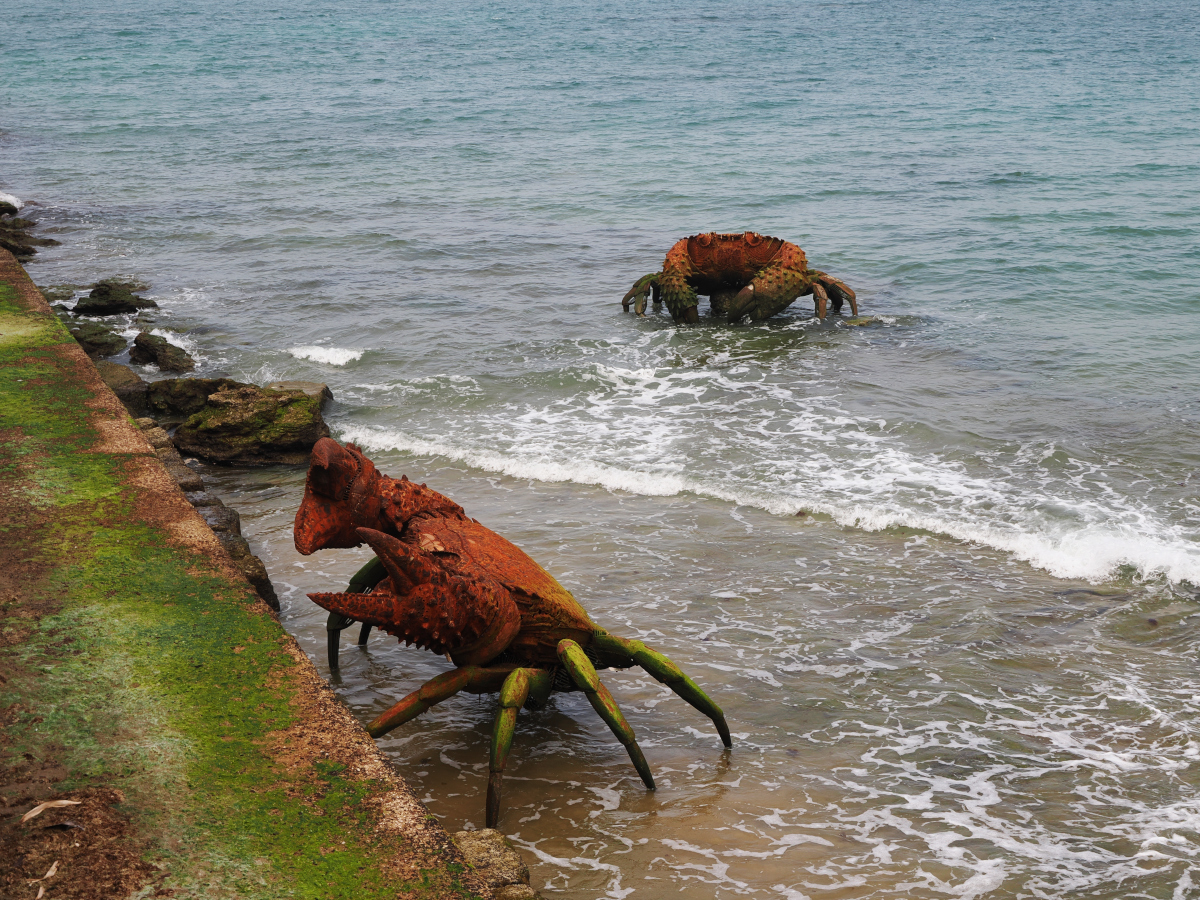
No luck with the chameleons, but we did find some super-sized crab sculptures. These would look fantastic in our rainforest!
Our walk back took us past some of the new developments, bleak, bare and empty, where at one point a real estate agent was trying to convince some unenthusiastic buyers to invest in future holiday happiness.
More crab sculptures.
A bit of social time
Chipiona was also where we met Marcus, a German rescue helicopter pilot/IT company CEO and proud new owner of a Nautitech Open 40 catamaran on his maiden, delivery and first solo sail on the boat; from La Rochelle to Barcelona. Quite the undertaking!
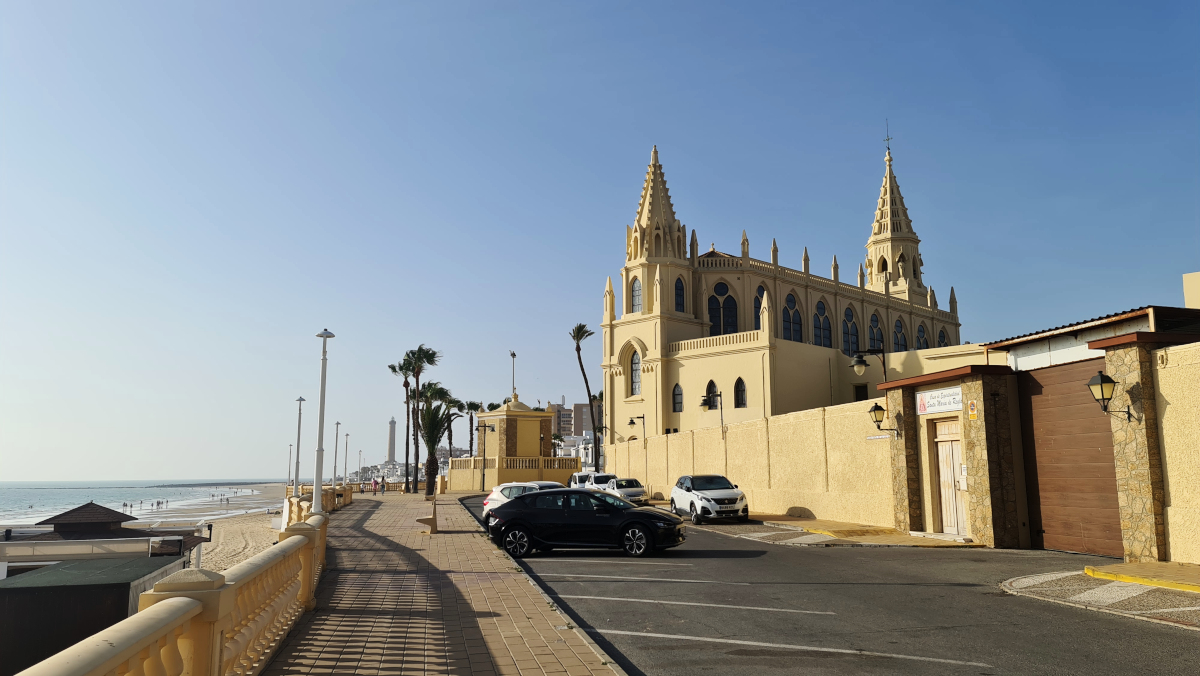
Santuario De Regla on the promenade in Chipiona.
We had seen him further off shore a couple of days before but this time had a chance to chat and almost to share happy hour with him. Almost, but no, as his first ever crew member turned up earlier than expected and so Marcus had to rush off. We would touch base with him a couple of times more along the Spanish coast before parting ways in the Strait of Gibraltar.
